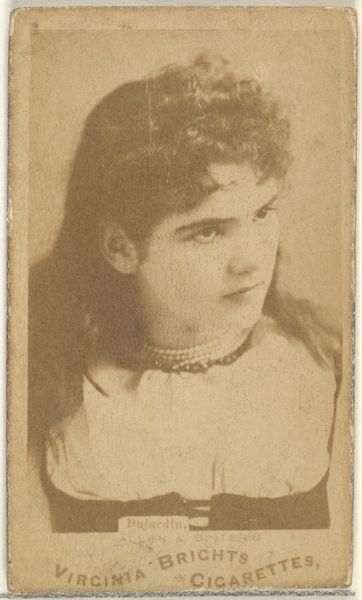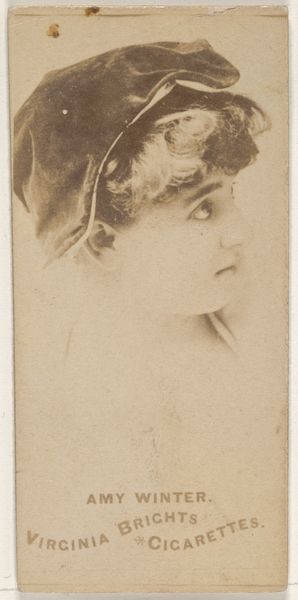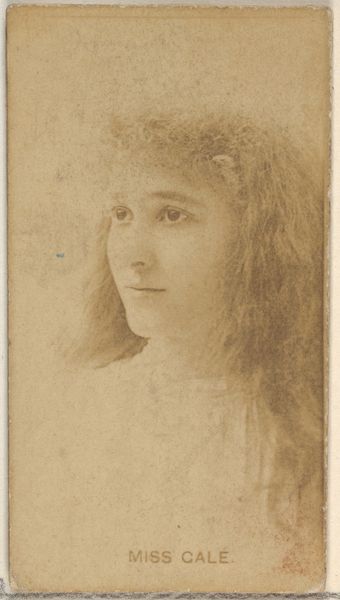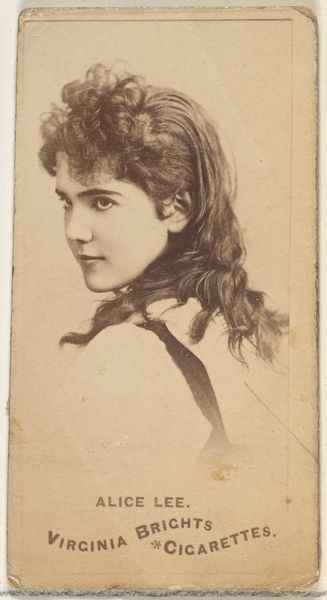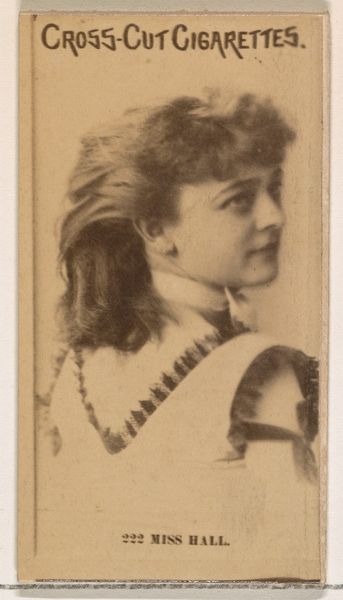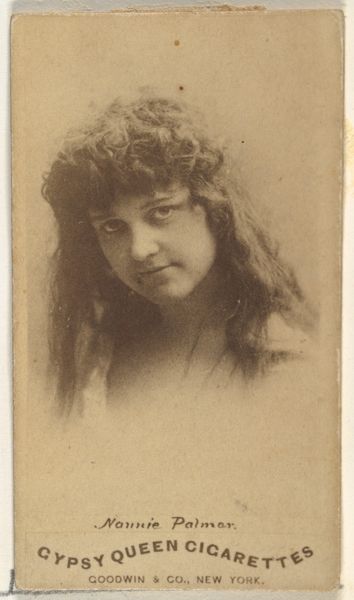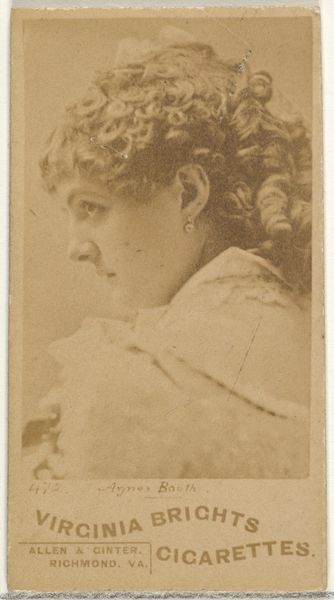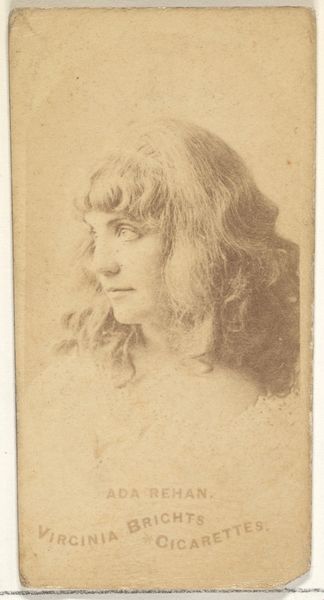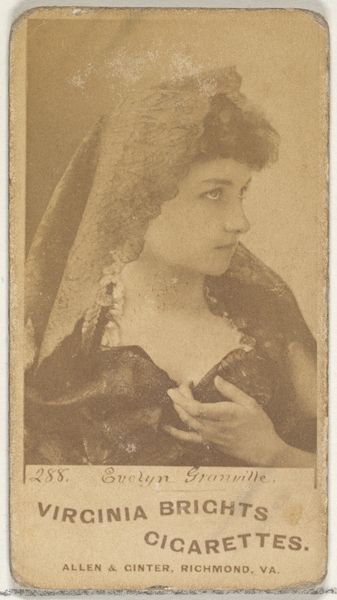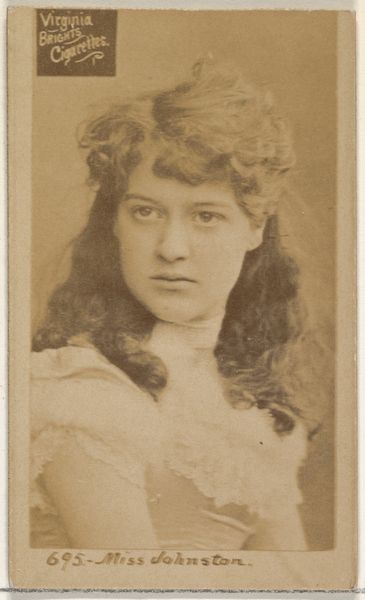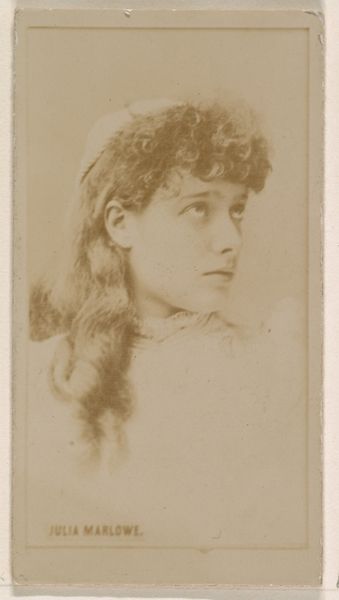
Sadie Leslie, from the Actors and Actresses series (N45, Type 3) for Virginia Brights Cigarettes 1885 - 1891
0:00
0:00
drawing, print
#
portrait
#
pencil drawn
#
drawing
#
toned paper
# print
#
pencil sketch
#
charcoal drawing
#
charcoal art
#
pencil drawing
#
coffee painting
#
underpainting
#
men
#
watercolour illustration
#
watercolor
Dimensions: Sheet: 2 3/4 x 1 3/8 in. (7 x 3.5 cm)
Copyright: Public Domain
Editor: So, this is "Sadie Leslie," a print from around 1885-1891, part of the "Actors and Actresses" series for Virginia Brights Cigarettes. The image has this hazy quality, probably because it was on a cigarette card. It's like an old photograph that's been touched up with drawing. What is striking to you? Curator: The most interesting aspect is that this image, seemingly just a portrait, existed as part of a mass marketing campaign. These cards weren’t high art, but they democratized image consumption. Sadie Leslie, whoever she was, became a commodity, an image linked directly to the pleasures and anxieties surrounding cigarette smoking. How do you think this image functions in that context? Editor: Well, it definitely romanticizes the brand, making it more desirable. But does it say something about the role of women and consumer culture at the time? Curator: Precisely. Think about it: women as both the subject of desire and the engine driving consumption. Her soft gaze and delicate features align her with an ideal of femininity meant to sell a product, hinting at how the emergent advertising industry utilized societal expectations. In a way, this innocent portrait actively shapes a budding culture of commercial imagery. Editor: I hadn't thought about it that way before – Sadie isn’t just a face; she's part of a whole marketing machine. Curator: Exactly. Examining art like this compels us to see beyond aesthetic beauty and explore how even everyday images shape our social and economic landscapes. Editor: That is really fascinating – thank you! I'll definitely view advertisements differently from now on. Curator: You’re welcome! It's crucial to understand how art becomes interwoven with everyday societal currents; it’s never truly detached.
Comments
No comments
Be the first to comment and join the conversation on the ultimate creative platform.
